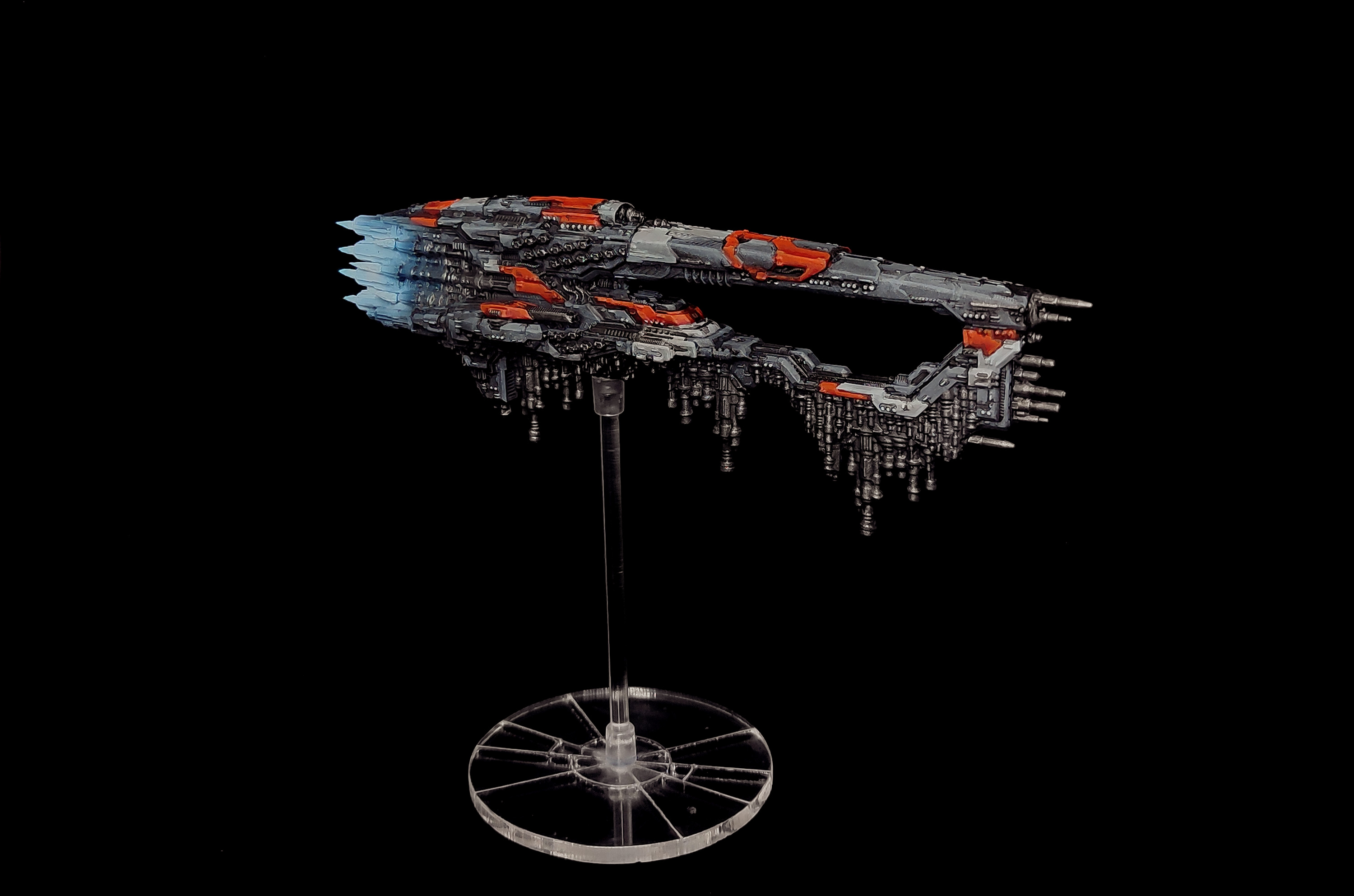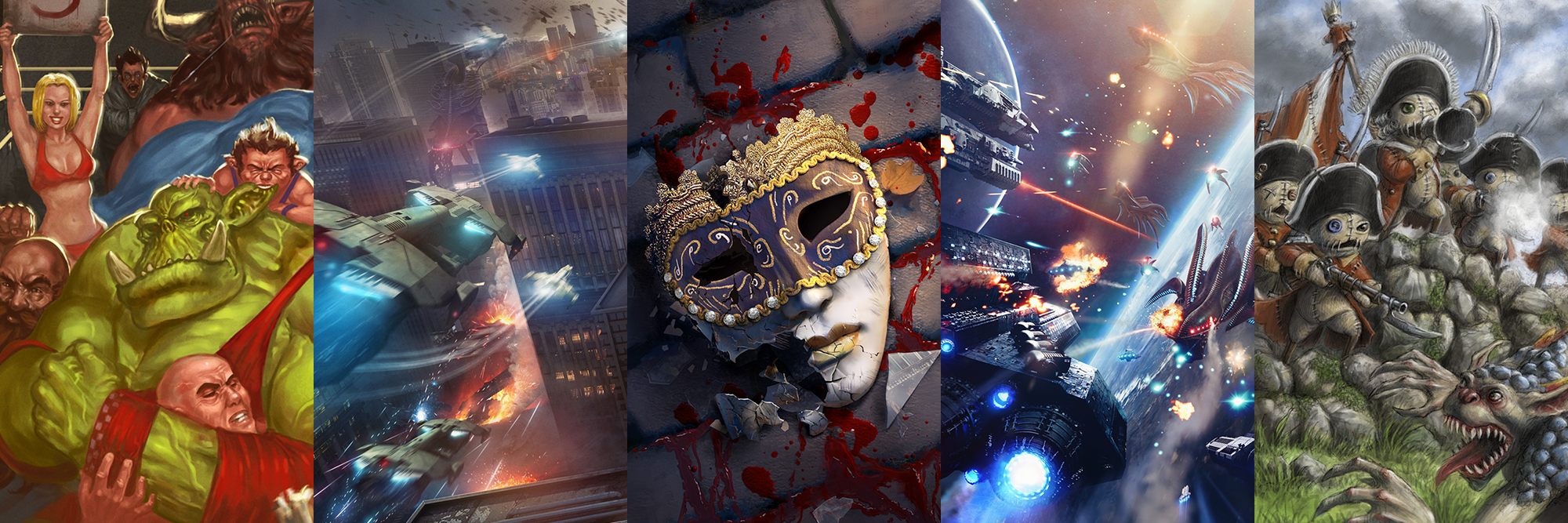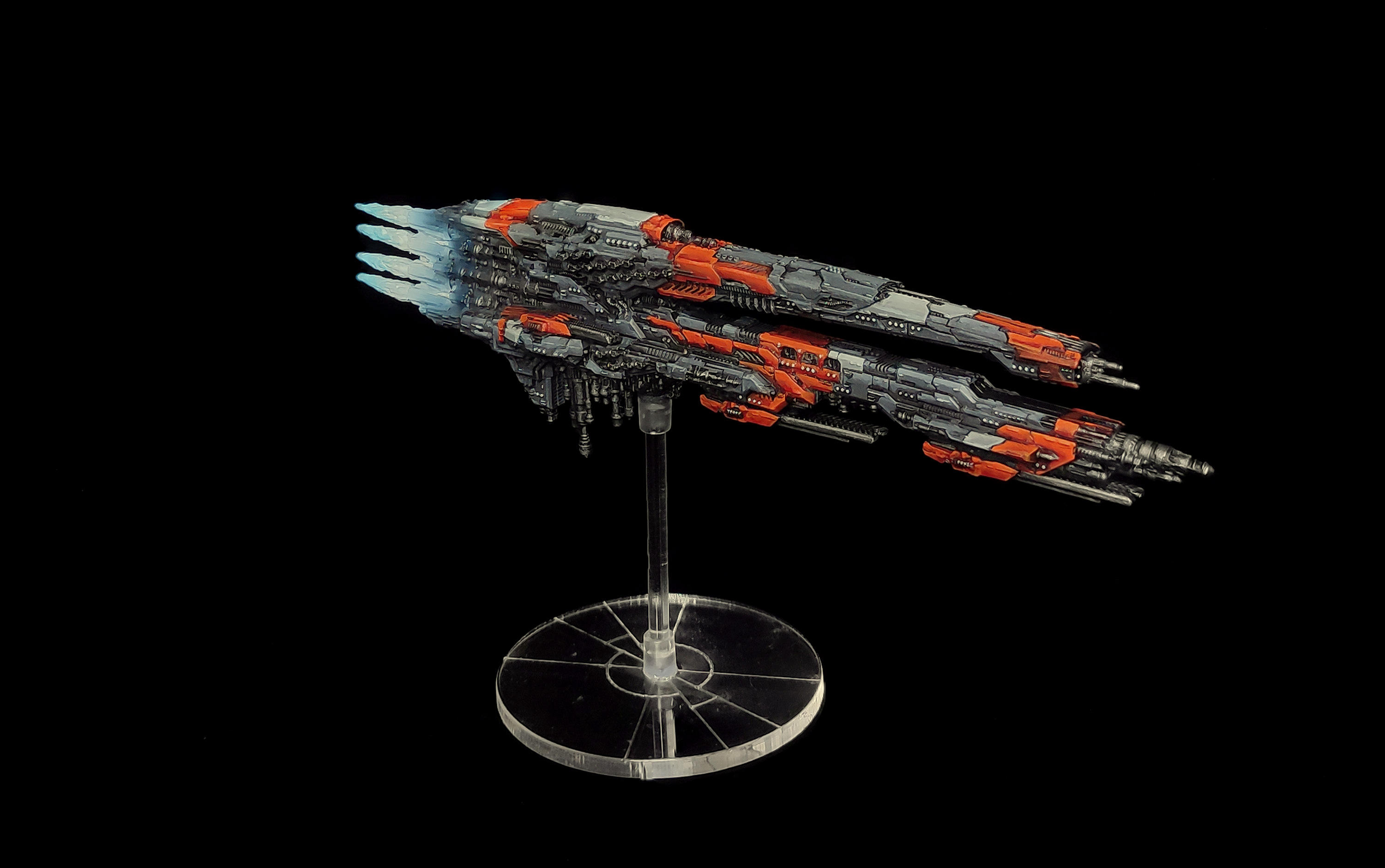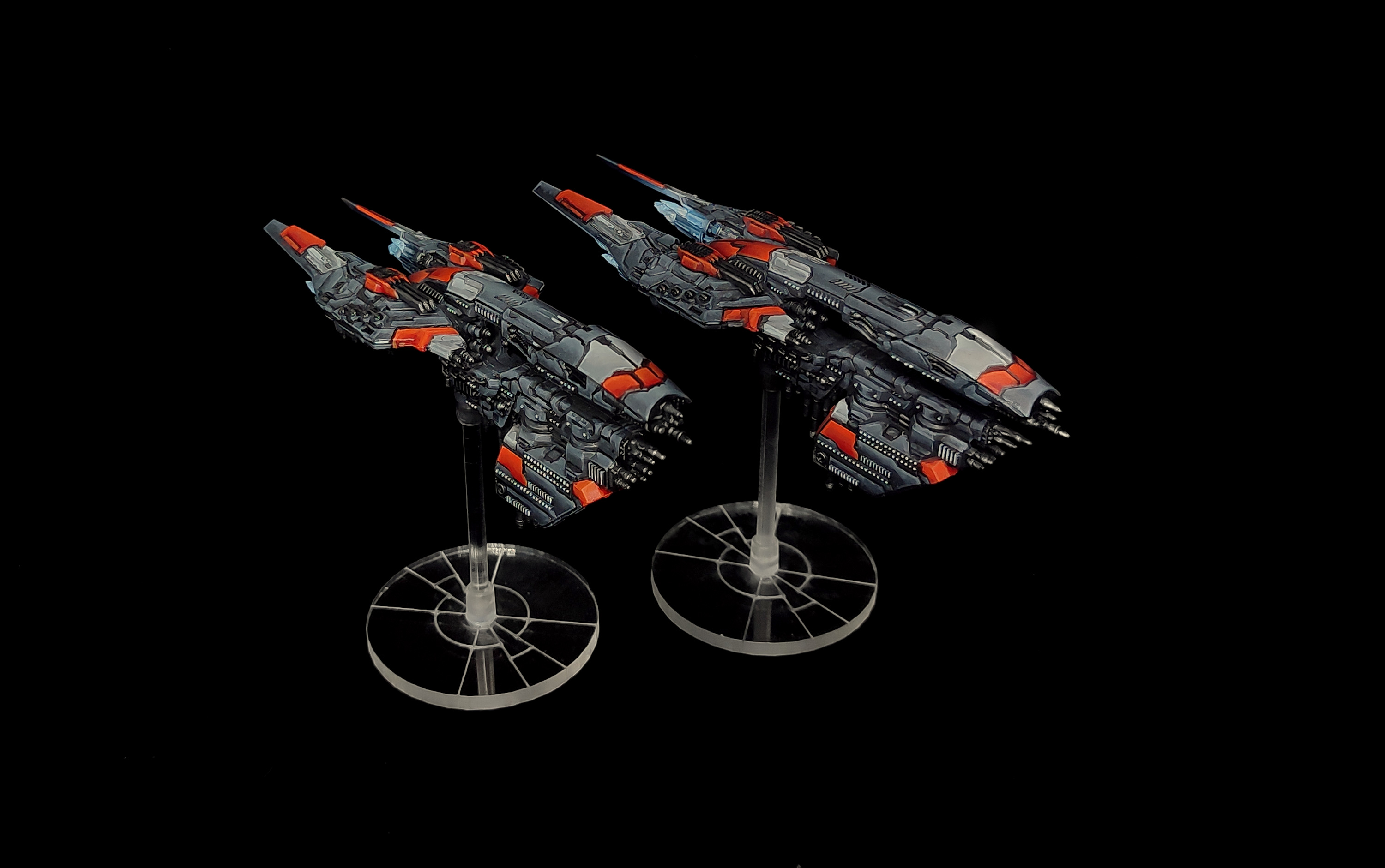Who doesn’t like looking at a gorgeous fleet…
Ships will come and ships will go but you’ll always remember the pretty ones. Sadly so many beautiful ships have been destroyed in mankind’s noble fight for survival in Dropfleet Commander but we honour them all. This week, we’re taking a closer look at the UCM fleet of Alex Marsh from Bottom of the Barrel.
Whilst this is a lovely fleet it’ll surely fall when the White Sphere deems it necessary.
The Mars Flotilla
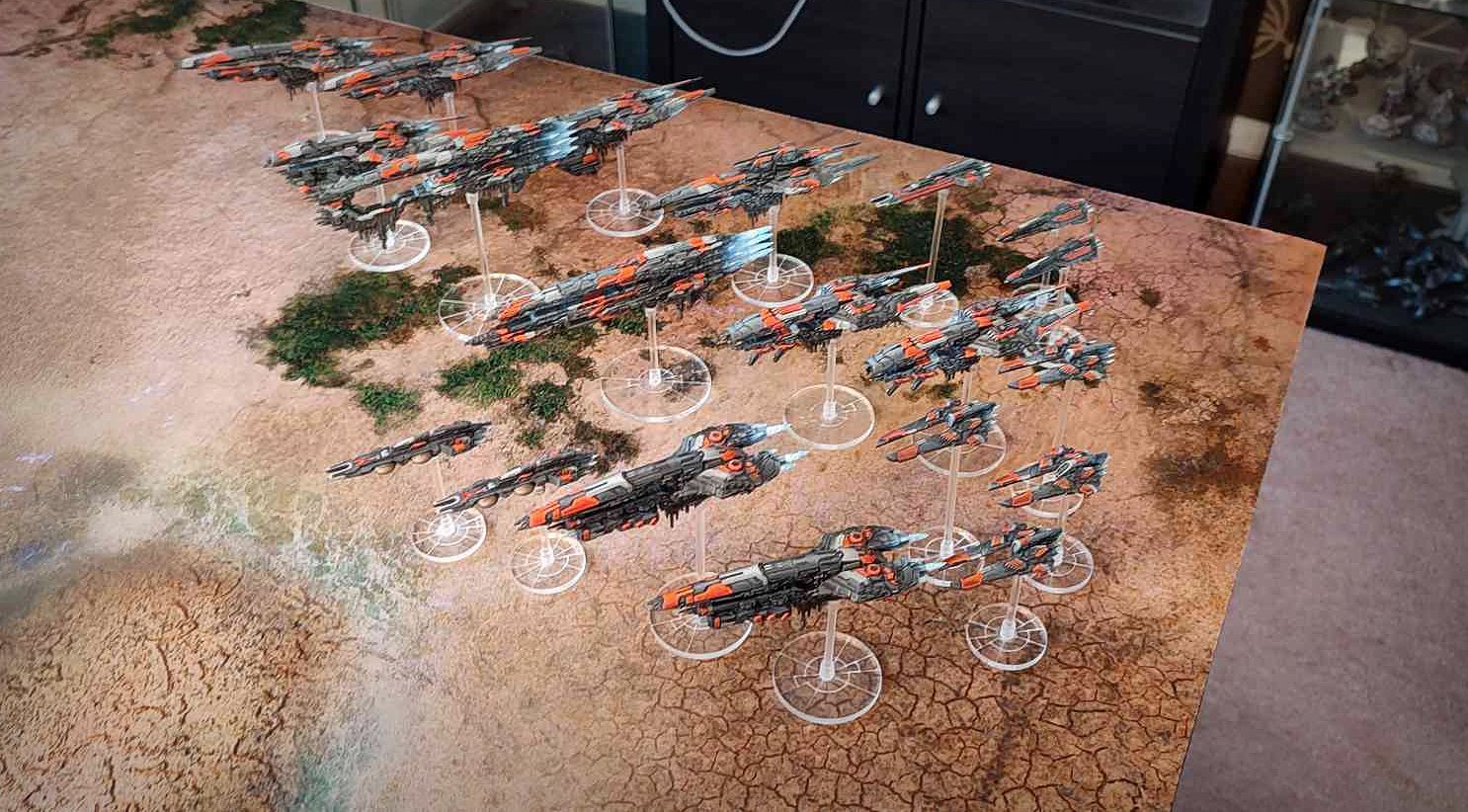
Commanders, a hulking UCM fleet has been spotted of the starboard side! Now please brace yourselves because unlike the majority of mankind ships, they’re not all GREY! Honestly, this is a shocking revelation and I may not recover from it. I could ramble on about how I love the use of orange and teal for the colour scheme but that would bore you all. Instead, Alex has kindly made some notes on his ships.
Rio Cruisers
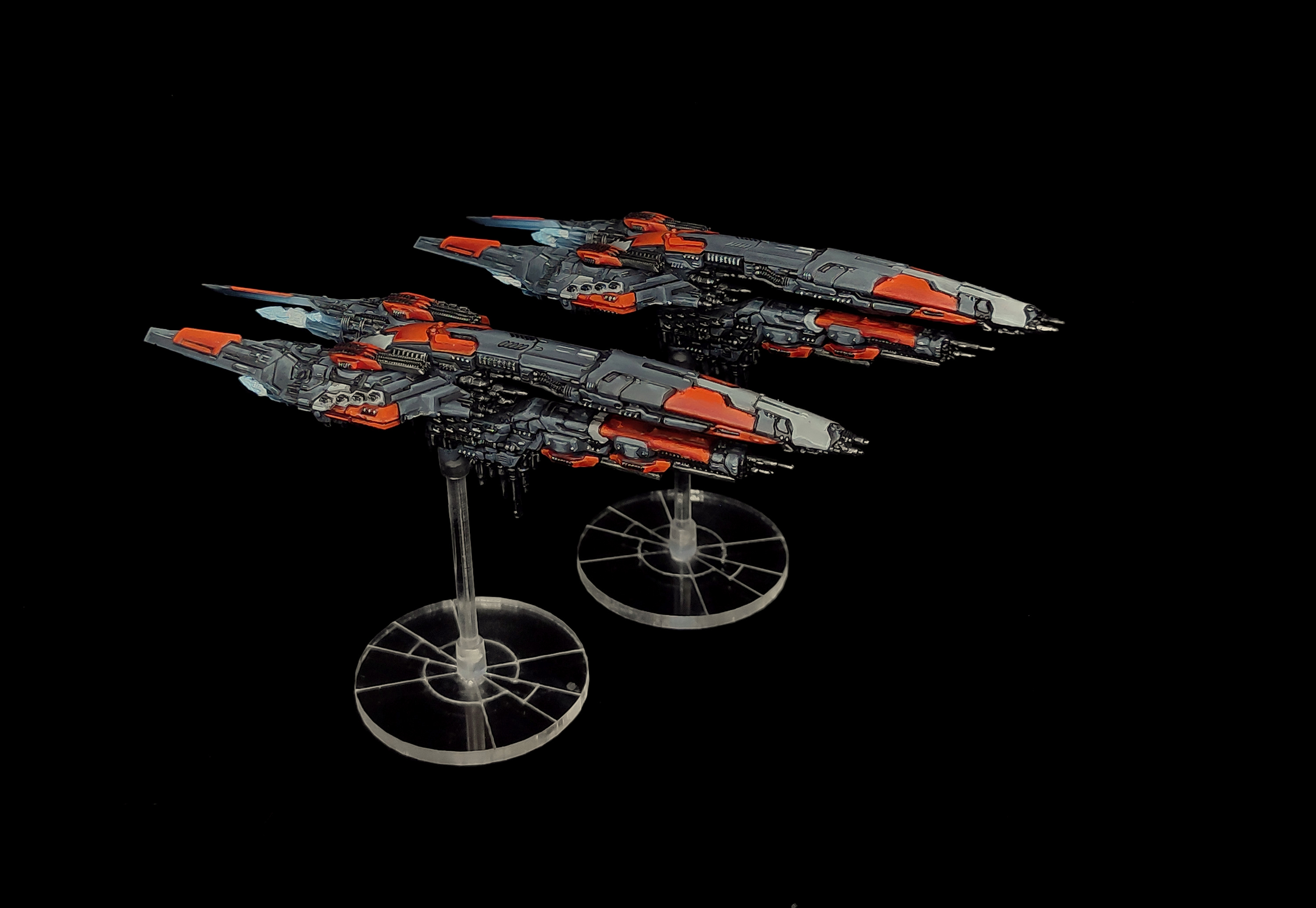
A pair of Rio Cruisers. These are the workhorses of my fleet, kicking out decent damage into most targets and being able to take a punch in return.
Vancouvers
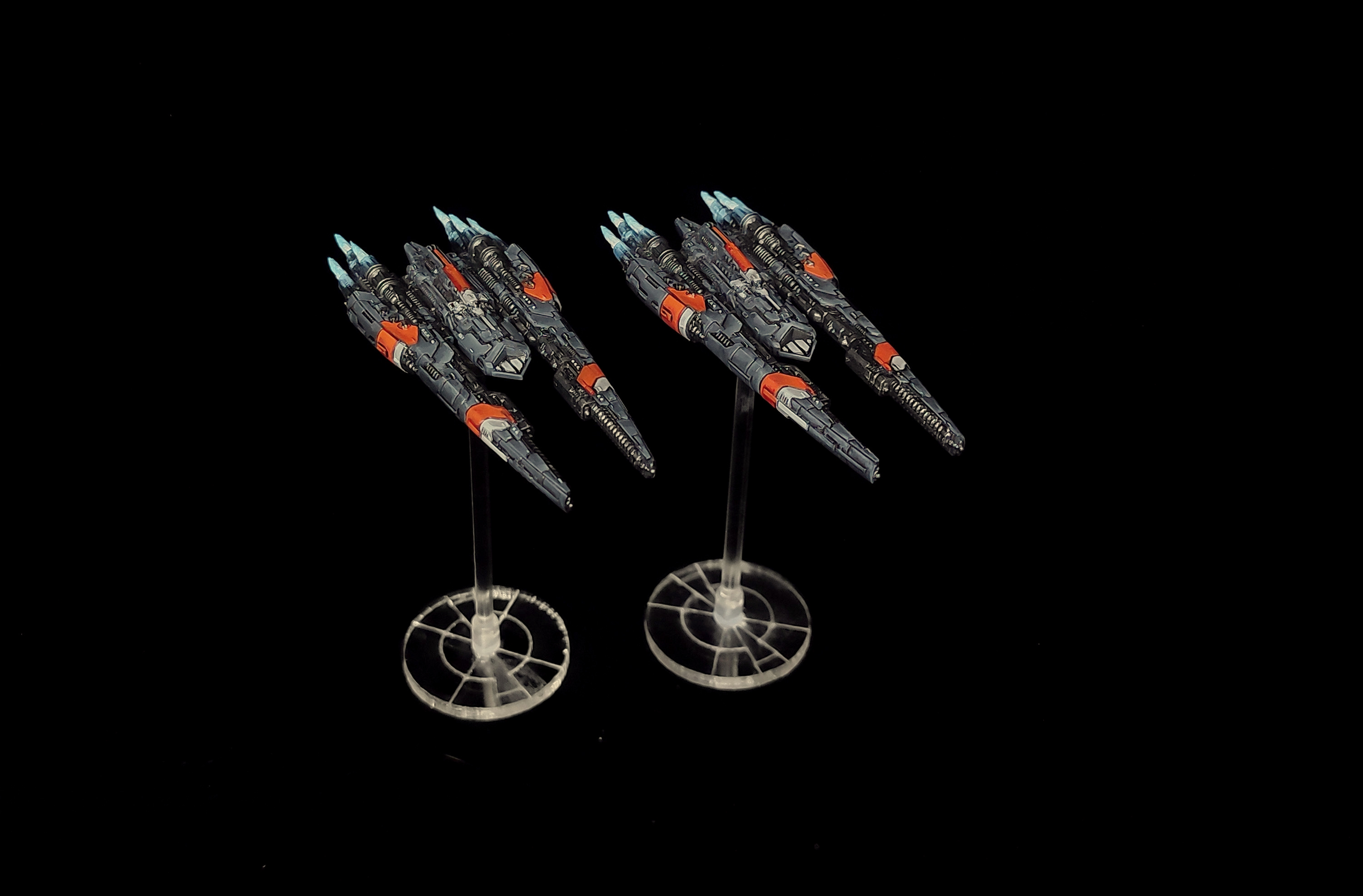
I know that the Kyiv is the darling of many UCM admirals, but I was keen to try launch (Battlestar Galactica being a formative experience for me in my early 20s), so I built a pair of Vancouver Escort Carriers from the Light Ships box.
Vilnius collage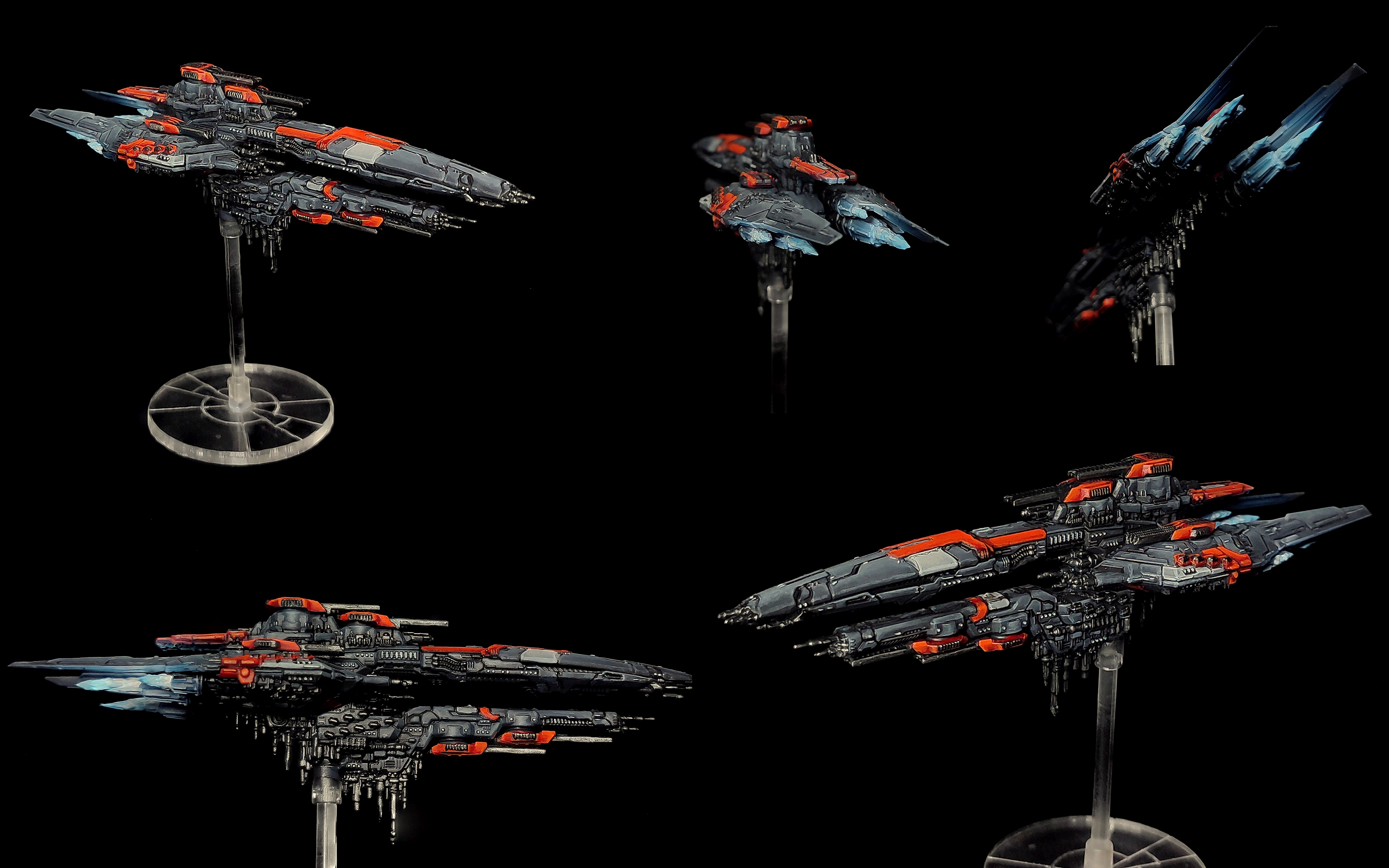
The pride of the fleet has to be the Vilnius Heavy Cruiser. The new design with the dorsal turrets further back looks great, and it perfectly encapsulates the UCM doctrine of “how do we make a vehicle better? Weld another of the same gun to it.”
Glasgows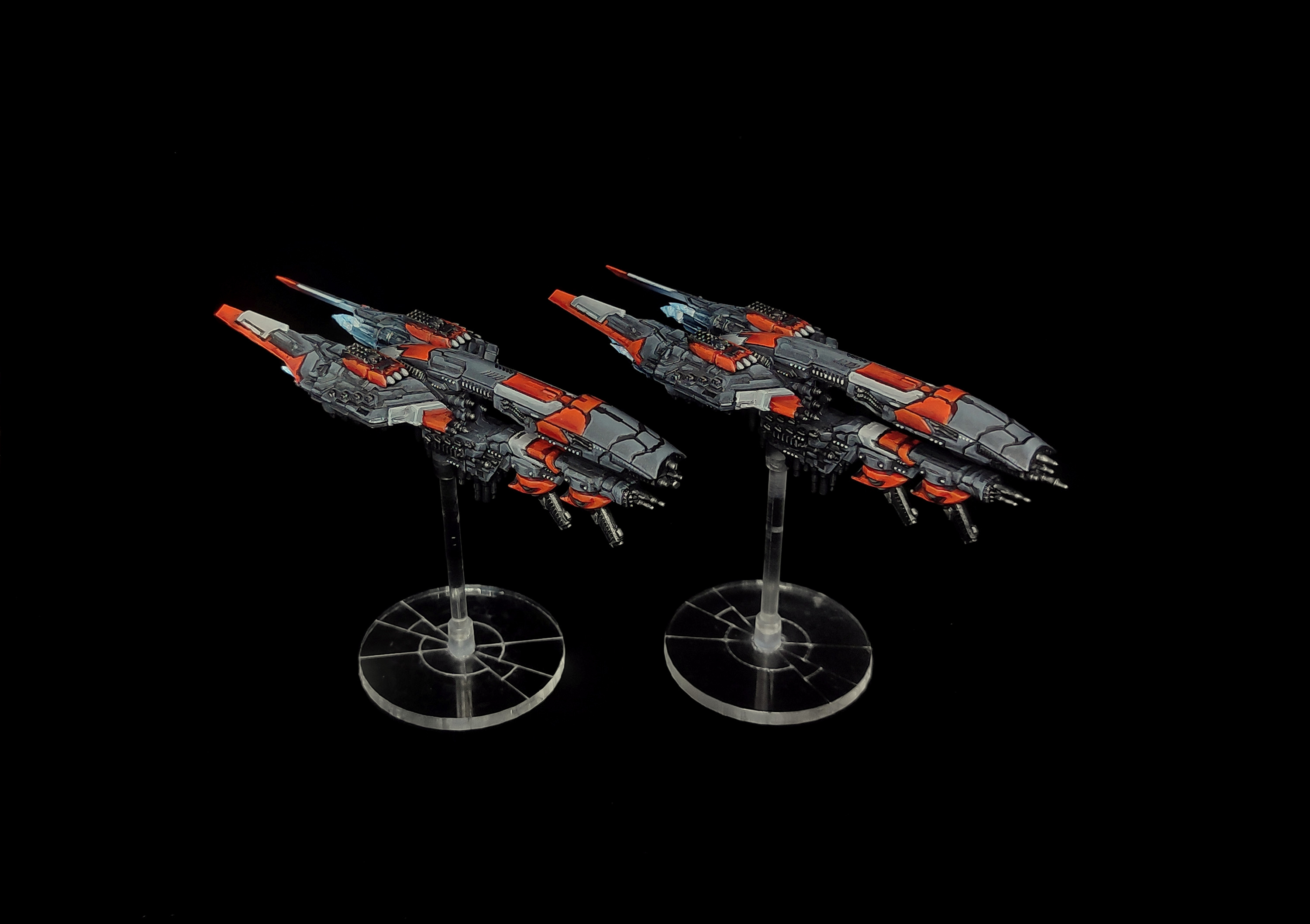
Some of my ships are made up of the older, more snub-nosed UCM cruiser sculpts – the new one is delightful, but the old one still holds up great! One nice thing is that they’re very much compatible with each other – here I was able to glue on a pair of the new missile turrets on the otherwise old sculpt and turn a pair of Madrids into close range brawler Glasgow cruisers. These appear in every list I run, bearing down on an enemy dropsite with malicious intent.
Most of the fleet are plastic (roughly half and half old and new sculpts), but I do have a handful of resin monsters in the collection. One of these is the venerable Johannesburg battlecruiser, which serves as a support carrier while still kicking out the firepower of the Vilnius. Working with resin is a bit of a challenge when you’ve been spoilt by lovely new plastic kits, but it wasn’t that bad and the beautiful exposed engines were a chance to really push the glow of the drive plumes.
The whole fleet was painted mostly using TTCombat paints – the grey is dark slate grey, airbrush of ospadele grey, then layers of thinned ash grey with an shale grey edge highlight. This gives a really nice neutral military grey that doesn’t compete with the rest of the scheme for attention. The light grey panels were also TTCombat paints, with a base coat of shale grey, a shade in the recesses with watered-down ash grey, and a highlight with frosted edge. Using the same greys as the main hull really helped unify the colour scheme. I also used frosted edge to pick out all of the dots and lines along the hull – it’s not just Shaltari collectors that have to deal with dots!
The metallics were simple to do – TTCombat tungsten steel, a black wash, tungsten steel again and then a highlight of folded steel. It was fun picking out which parts of the greebles to do metallic and which to do hull plate coloured, and then trying to be consistent with that across the fleet!
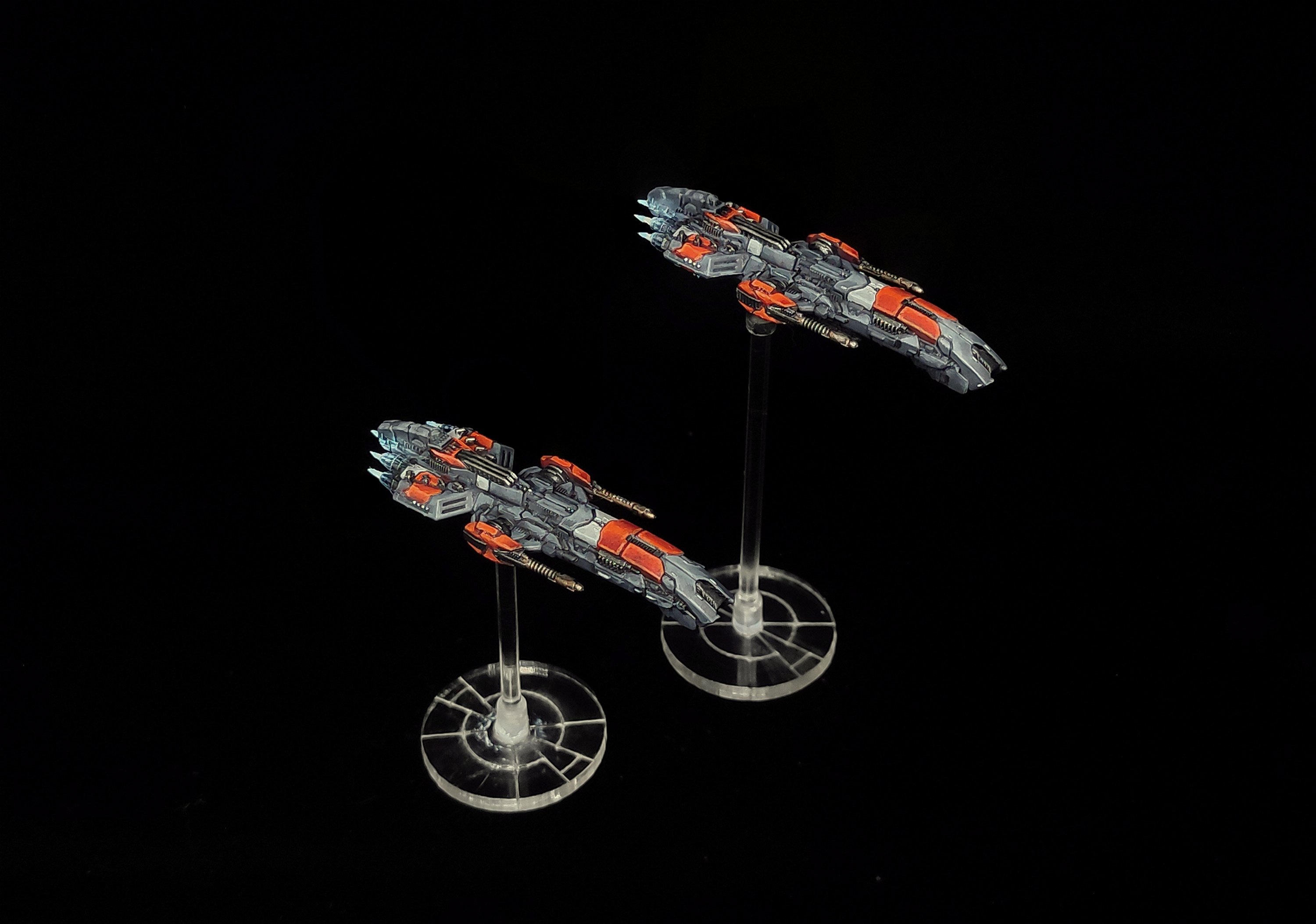
For the orange, I wanted the punchiest orange I could make. Interestingly it’s so punchy it seems to confuse the camera, reading as a scarlet red instead half the time! The recipe was pro acryl bold pyrrole red, bold pyrrole red mixed with orange, pure orange with an edge highlight, and then a glaze of fluorescent orange over the top to really make the panels pop.
The drive plumes – made from some 3rd party muzzle flash parts, resized for the various ships’ engines – were basecoated in TTCombat’s white. I then airbrushed white ink over them and the drives themselves, along with any areas the light would hit the model itself, and then gave the lit areas and tips of the drive plumes a drybrush with light azure blue. The secret sauce was then an airbrush with a fluorescent blue, really punching up that glow effect.
